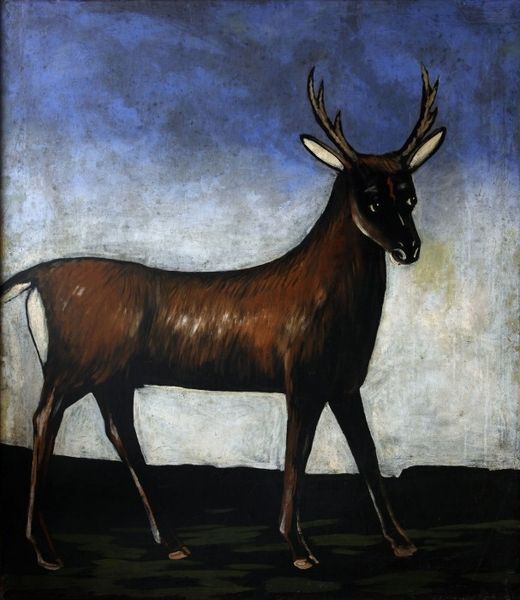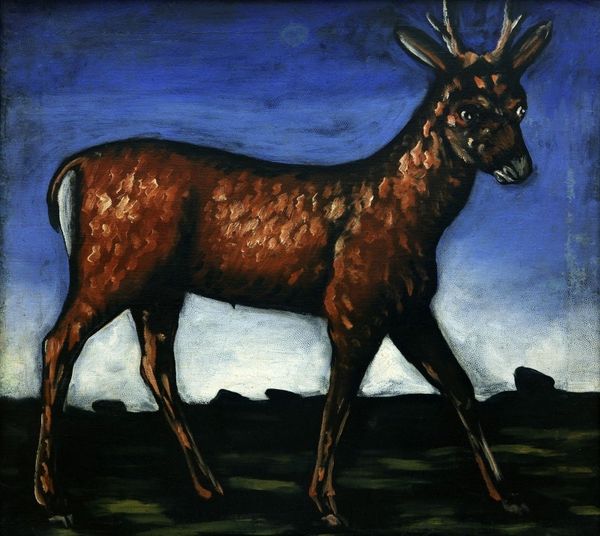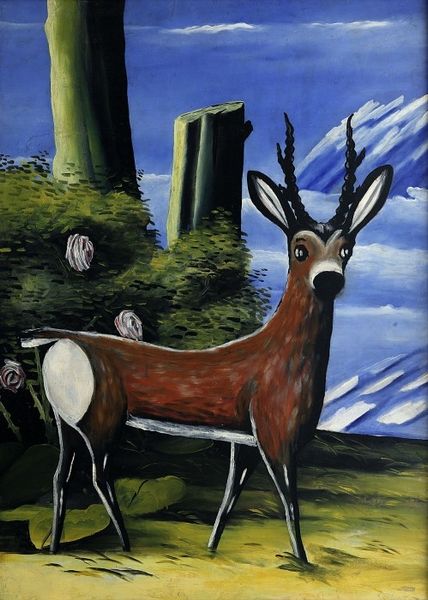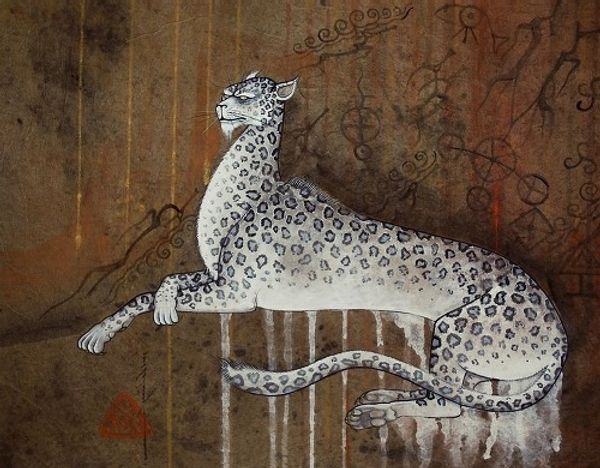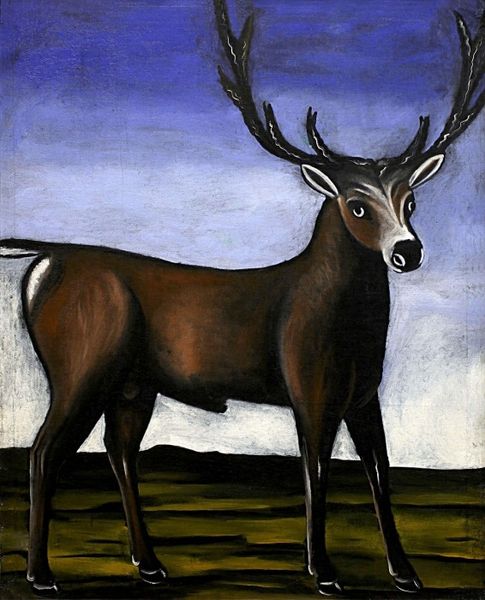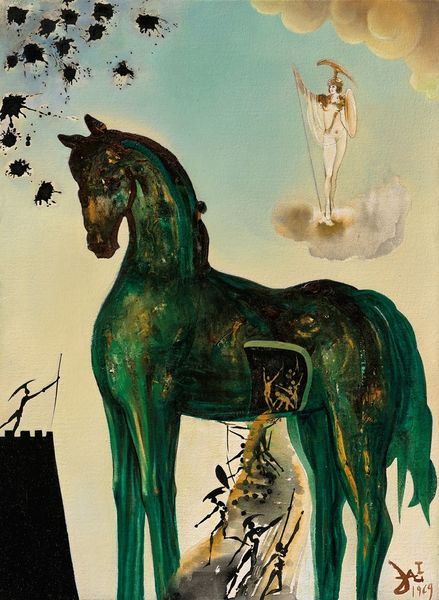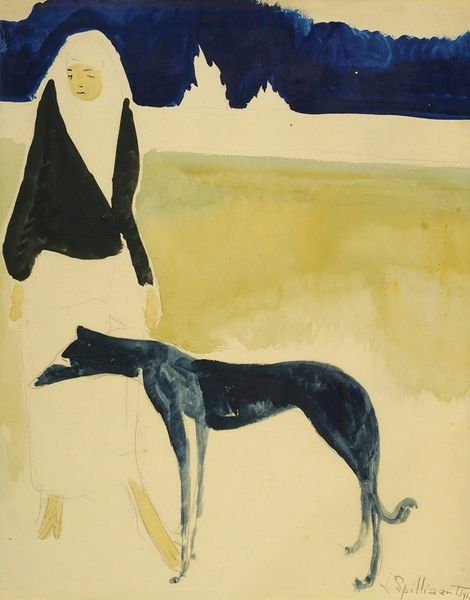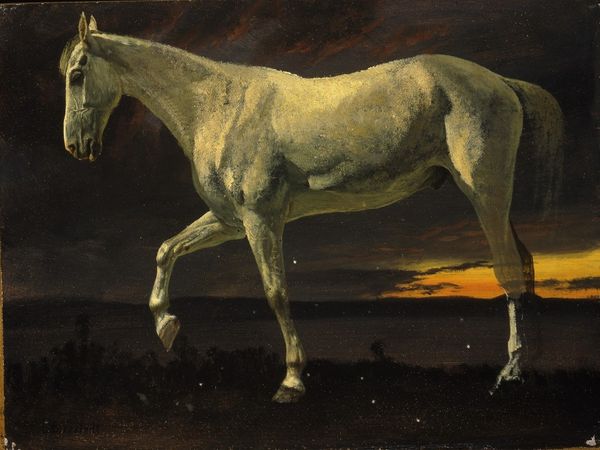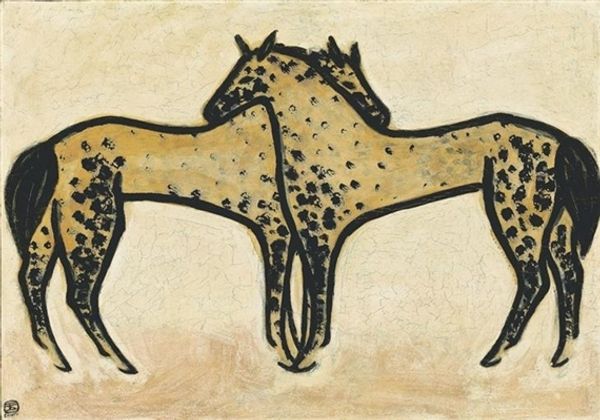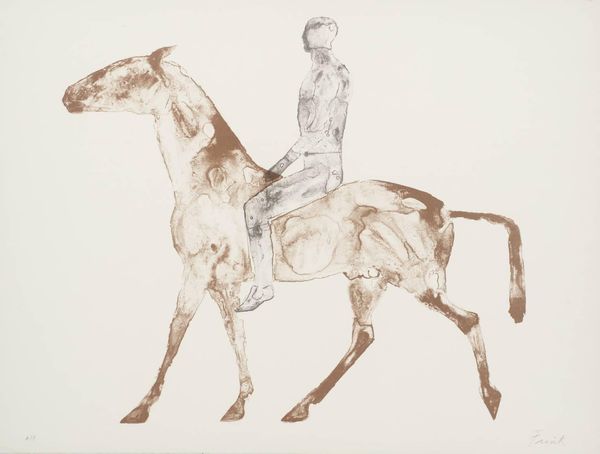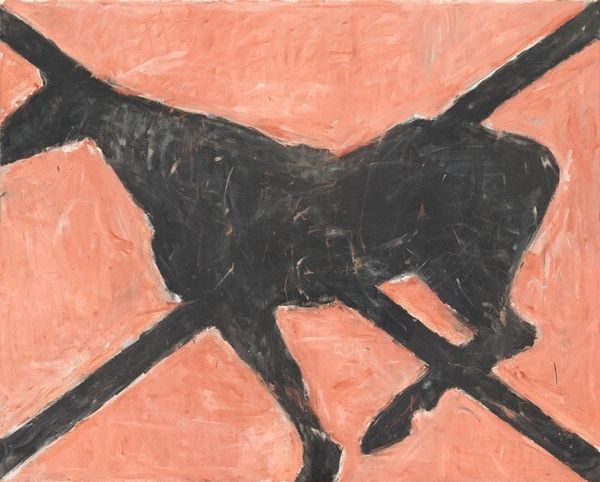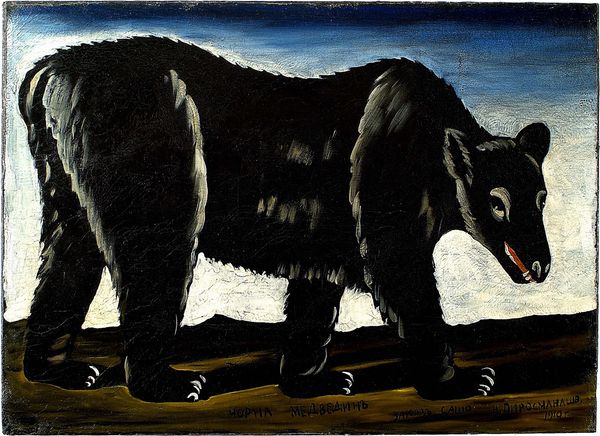
Dimensions: 139 x 111 cm
Copyright: Public domain
Editor: Here we have Niko Pirosmani’s "Giraffe," painted in 1905 using tempera. The almost monochromatic palette creates such a stark, melancholic mood. How do you interpret this work? Curator: For me, this giraffe speaks volumes about displacement and the outsider experience. Pirosmani was a self-taught artist, largely excluded from the mainstream art world of his time. Considering his background and Georgia's socio-political context in the early 20th century, the giraffe becomes a potent symbol. Editor: In what way? Curator: The giraffe is an exotic creature, out of place in the Georgian landscape. Doesn't this mirror Pirosmani’s own position as a marginalized artist, painting in a style that diverged sharply from academic norms? The animal's solitary stance emphasizes a sense of alienation, resonating with the artist's own feelings of otherness. The bare background suggests an emptiness, amplifying this isolation. Also consider the socio-economic undercurrent: animals as entertainment and status symbols for the wealthy, which plays into class divides. What’s your reading? Editor: That’s fascinating. I was focused on the simplicity, the almost childlike rendering, but your interpretation opens it up to a deeper commentary about social hierarchies. Curator: And his technique amplifies that reading: rejecting traditional artistic training can itself be read as an act of resistance against societal expectations. It’s all interwoven. Editor: This has totally shifted how I view the painting; I see the social critique now. Curator: Exactly, it's a powerful reminder that art can both reflect and critique societal norms.
Comments
No comments
Be the first to comment and join the conversation on the ultimate creative platform.
